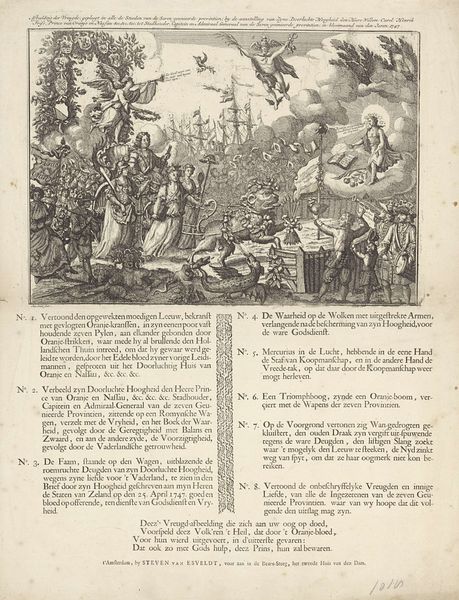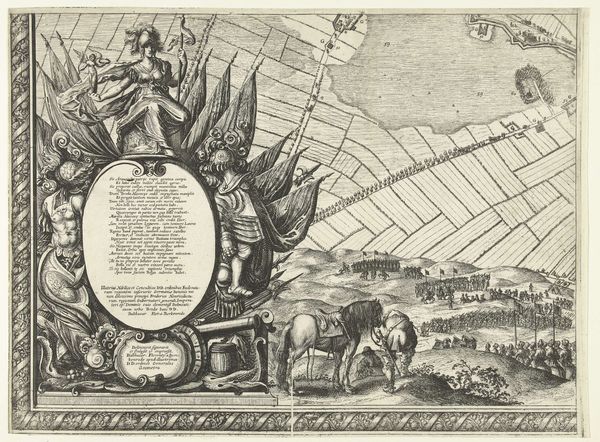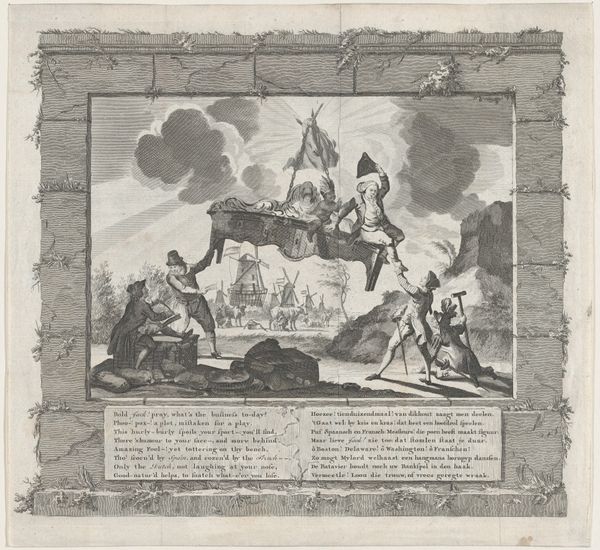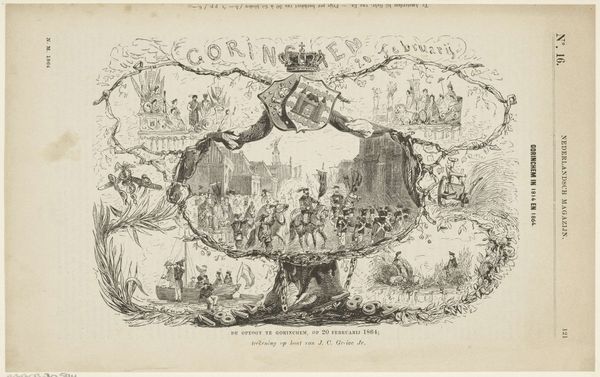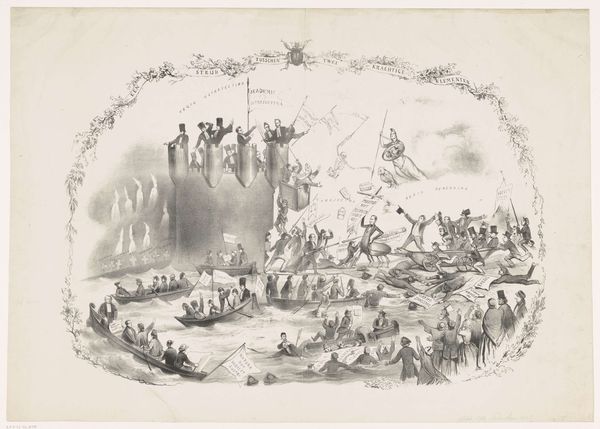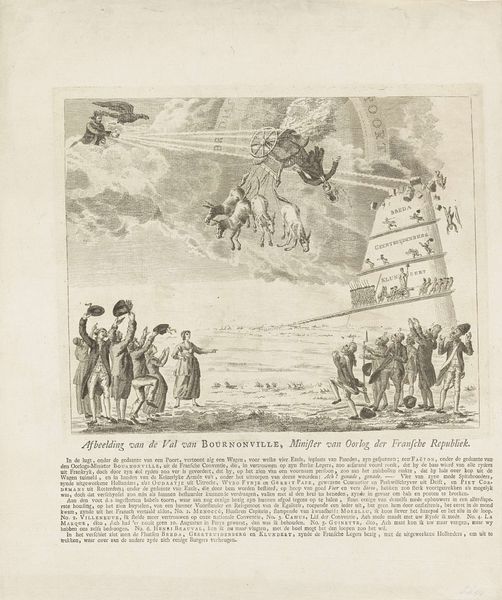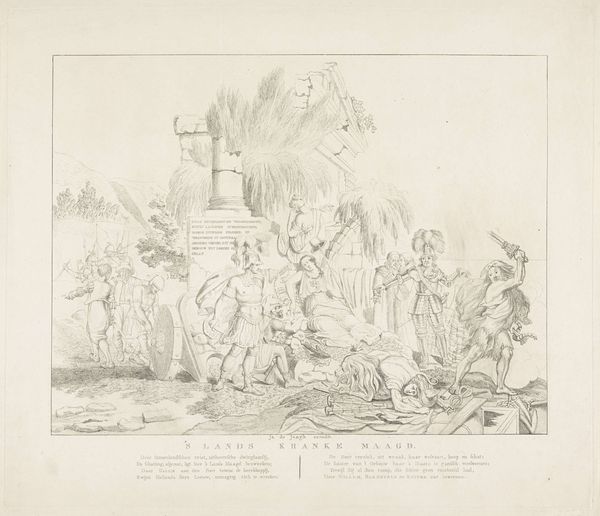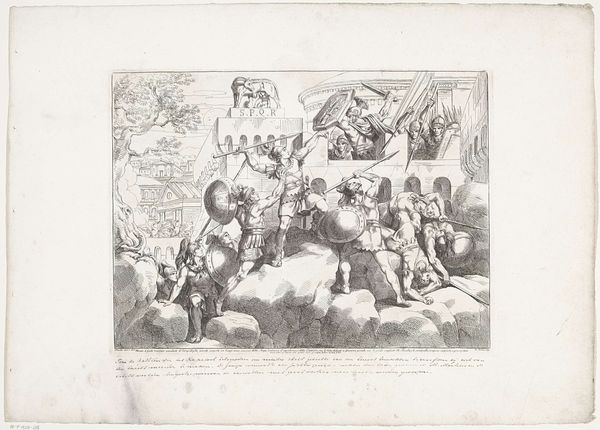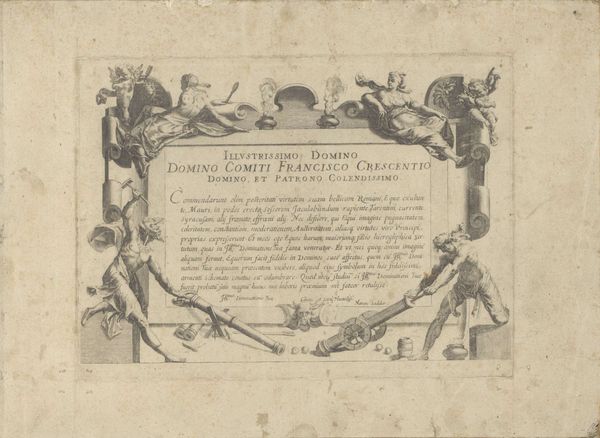
print, engraving
#
narrative-art
# print
#
caricature
#
figuration
#
romanticism
#
line
#
history-painting
#
engraving
Dimensions: height 338 mm, width 445 mm
Copyright: Rijks Museum: Open Domain
Curator: Christoph-Wilhelm Bock's "Flight of Napoleon, 1815," created between 1815 and 1820, is an engraving held at the Rijksmuseum. It presents a complex, allegorical scene from the period. What catches your eye? Editor: Honestly, it's the sheer chaos. The image is so dense, brimming with figures and symbols, it almost feels overwhelming. It feels like visual political commentary. Curator: Absolutely. As a satirical print, it leverages caricature to critique Napoleon's downfall. The figures are deliberately distorted. Note how Bock utilizes line to create a frenetic sense of movement and disorder. Editor: I see that. It makes me think about the period’s artistic investment in myth-making surrounding powerful figures like Napoleon, but this piece cleverly disrupts it. What is the statement by visually cutting him down to size? Curator: The piece reflects a widespread sentiment across Europe post-Waterloo. Beyond denouncing Napoleon himself, this artwork captures a broader shift in the socio-political winds after his regime collapsed. Editor: I like how it intertwines high and low art to talk about its subject. By that, I mean it speaks to a broader audience, making it politically accessible through caricature. There’s a certain democratizing effect at play. What I wonder is how the public received it? Curator: Prints like these circulated widely, helping to shape public opinion. They provided visual fuel for discussions about Napoleon’s legacy, and contributed to the collective construction of his historical image. It's difficult to gauge exact reactions, but the prolific creation and distribution of such prints indicates their relevance and impact. Editor: These kinds of prints are useful reminders that art isn’t always a solemn, hushed affair – it can be a raw, immediate form of protest and cultural commentary. In today's visual world, such art is really still incredibly important and deserves continuous study. Curator: It does indeed open a window into how anxieties about power, leadership, and societal change were negotiated through the visual language of the time. Its layered details and biting satire offer a complex glimpse into the early 19th century.
Comments
No comments
Be the first to comment and join the conversation on the ultimate creative platform.
